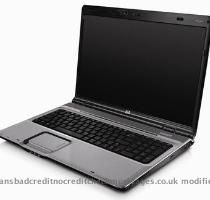Review: Make the Internet your own TV station with laptops that beam PC screen to the HDTV
By Peter Svensson, APWednesday, May 26, 2010
Review: New laptops beam your PC screen to the TV
NEW YORK — Want to get Internet video to your TV? There are lots of options, but here’s a pretty elegant one: new laptops that can send whatever is on their screens wirelessly to the TV.
The technology is called Intel Wireless Display, and it’s showing up in laptops from Dell Inc., Toshiba Corp. and Sony Corp. It works well, though I don’t think it’s the be-all and end-all that will bridge the world of PCs and TVs. The biggest hurdle for Wireless Display is that you need a new laptop to use it.
The laptops are relatively big, heavy models, ranging in price from $900 for the Toshiba E205 I tried to $1,050 for the Sony Vaio S. As sold by Best Buy, they come with a Netgear Push2TV wireless adapter, which is a small box the size of two card decks. You place it in your entertainment center and connect it to the TV, preferably with a digital HDMI cable, or to a digital receiver that’s already connected to the TV.
You fire up Intel’s software on the PC. It senses the presence of the Push2TV receiver and lets you connect to it. Whatever’s on the laptop’s screen is now duplicated on the TV.
In early versions of the product, it was difficult to utilize the full screen area of a “1080p” HDTV, but Intel has fixed that. You still need to make a quick manual adjustment to make the PC’s signal fill out the screen.
The resolution projected by the PC is equivalent to 720p, the lower of the two HDTV resolutions. Blown up on a big TV with 1080p resolution, it can look a little blurry. But for the most common purposes, like watching videos on YouTube, Hulu or Netflix, it works well enough. The wireless signal carries audio as well, which you can hear either from the TV’s speakers or from your receiver, if you connected through that.
The wireless signal has plenty of range. I carried the laptop into another room and back without interruption.
There are a couple of quirks that limit the usefulness of Wireless Display. One is that you’re now using your laptop to drive the TV image, so if you want to check Facebook or e-mail while watching TV, that’s going to show up on the big screen, blotting out the movie you’re watching. It would be neat if the TV could act as “second monitor” for the laptop, so it could display something other than what’s on the laptop’s screen, but that’s not the case. I bet I’m not the only one who would want a second laptop while using Wireless Display.
The other quirk is that there’s delay of just less than a second between something happening on the laptop screen and the same thing showing up on the PC screen. That doesn’t sound like a lot, but it makes it difficult to control the laptop by looking at the TV screen. If you need to type something, you definitely need to look at the PC screen, or the delay will drive you crazy. You can also forget about using Wireless Display for big-screen gaming — there’s just too much of a lag between your actions and the screen’s reactions.
That said, there are still a lot of good uses for Wireless Display. So is this going to be a standard feature? Not likely, at least not in this form. The technology is Intel’s baby, and it’s available only for laptops that use relatively powerful Intel processors and Intel graphics chips. That means light, skinny laptops with power-sipping processors can’t have it. Nor can beefier laptops with non-Intel graphics chips.
What we’re really looking for is a more comprehensive, industry-wide standard for wireless video connections. The industry is working on that, but I think it’ll be a few years before that’s a common feature. Until then, Wireless Display isn’t a bad alternative, at least if you’re already looking for a laptop in the right size and price range.
Tags: Arts And Entertainment, Computer Hardware, Computing And Information Technology, Consumer Electronics, Entertainment And Media Technology, High Definition Television, Hulu, New York, North America, Televisions, United States, Youtube
|
May 27, 2010: 5:05 am
This one of a kind program that lets you turn your laptop or pc into a super TV, You’ll be able to open your eyes to new things with this new opportunity to watch and appreciate a wide range of channels. |


Tv Technology